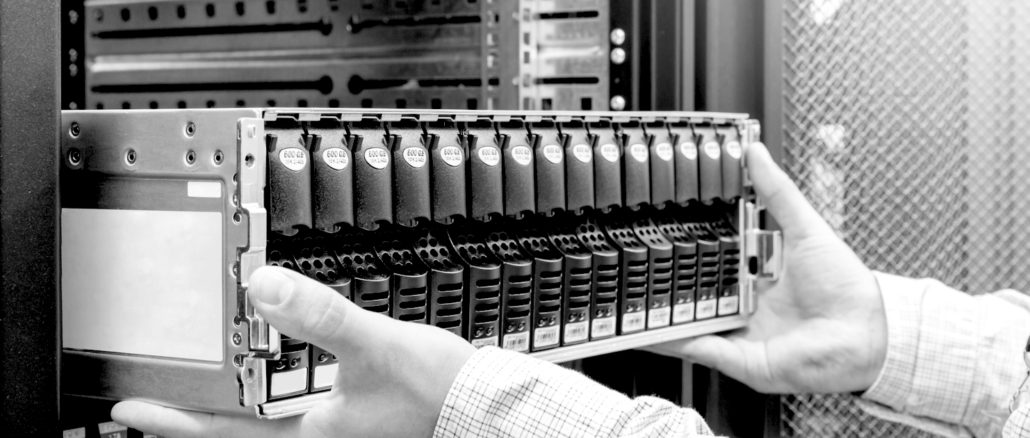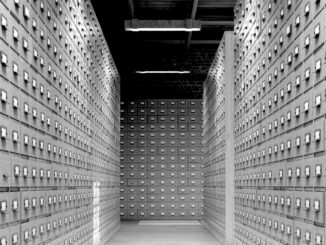
For more than two decades, DirectData Networks has focused on HPC storage, supplying large systems to enterprises and research institutions wrestling with complex and data-laden workloads and taking on such challenges as acquiring the Lustre File System from Intel in 2018. At the ISC 19 supercomputing show in June, DDN continued its efforts in the high-end arena with the unveiling of EXA5, the latest generation of the company’s EXAScaler storage offerings for artificial intelligence and HPC systems.
However, in a shifting IT world of clouds and data analytics, containers and virtual machines, emerging technologies like AI and machine learning, enterprises over the past few years began looking for more from DDN. The company was hearing from customers and partners alike that they needed help around the rapidly evolving workloads that were coming into the enterprise, according to Kurt Kuckein, senior director of marketing at DDN.
“Folks valued DDN’s expertise and capabilities for a long time around their big data workflow, but they had other options whether it was virtualization – and we constantly had customers coming to us to fulfill their VDI workloads – and in some cases we did make those work,” Kuckein tells The Next Platform. “In other cases, they were just looking for capabilities that we didn’t have but they still wanted something that DDN stood behind, so while partnerships were interesting, it was even more interesting for us to look into how we could potentially grow our business beyond the organic growth that we had done in our previous 20 years and really try to make the leap into these new markets that we had been slowly evolving towards.”
The slow evolution has been accelerated since last year, when the company bought bankrupt enterprise storage vendor Tintri for $60 million, which brought with its virtualization, DevOps and virtual desktop infrastructure (VDI) chops and began running is a subsidiary. As The Next Platform noted earlier this year, that deal was followed by DDN earlier this year buying Nexenta, a specialist in software-defined storage (SDS) technology. Both acquisitions gave DDN quick entry into parts of the enterprise that the company had little presence in previously. Like Tintri, Nexenta has been operated as a separate entity.
Another puzzle piece was added late last month when DDN bought the IntelliFlash business from Western Digital, a move that gave it more capabilities in such areas as containers and virtual machines in multicloud environments. At the same time, the company created an enterprise-focused business unit – DDN Enterprise – that will bring all three of the new businesses under a single umbrella. Doing so will allow DDN to streamline operations around the three businesses, which will result in simpler and less expensive operations. More importantly, the new businesses give DDN more a larger presence in enterprises to go along with its traditional HPC business.
DDN also is investing $200 million into the effort to drive innovation. It’s part of evolving picture, and the deal for the IntelliFlash business doesn’t mark the end of DDN’s acquisitions, according to Kuckein.
“We’re continuing to look for value pieces that we can add to the portfolio to make us even more compelling,” he says. “In the short-term forseable future, what you will see us doing really is building this enterprise portfolio to do a number of things in and of itself. The pieces that we put together with IntelliFlash, Nexenta, and Tintri each represent a really interesting piece of technology that can stand alone. When put together, they really cover a pretty complete range of use cases within the enterprise; use cases in a more horizontal perspective. Everything from the bare metal or high-performance online transaction-processing, database-type workloads with IntelliFlash, the virtualized workloads with Tintri, and then for folks who need flexible software-defined anywhere from all the way into the core of the datacenter with Nexenta, you’ll see us articulating a strategy going into 2020 around how we see going to market with those things together under the DDN Enterprise approach. Part of that strategy also is to just get the additional validation in the enterprise and be able to have the conversations with the enterprise users around their high-performance, AI or big data workloads or the [traditional] DDN conversation as well.”
Among the drivers of DDN’s acquisition push is the emerging need for high-performance storage and more scalability in the enterprise, Kuckein says. Even as organizations migrate more of their storage needs to the cloud, there are still needs to have data close at hand in the datacenter. There was a need in DDN to get the products and skills to serve the enterprise IT shop and bringing Tintri, Nexenta and IntelliFlash into the fold in large part do that.
“Long story short, it helps us sell more stuff to the people who already buy our stuff and helps make us more attractive for folks looking at us,” Mario Blandini, who joined the company in August as chief marketing officer and chief evangelist for DDN Tintri and now holds those titles for DDN Enterprise, tells The Next Platform.
Though all three new businesses are under the DDN Enterprise roof, there are no plans to more closely tie the products together by creating a common core base, Blandini says. The individual platforms are purpose-built for particular use cases. However, more value can be created by providing a layer of common real-time analytics and predictive modeling tools that can be leveraged by all platforms, he says.
Kuckein says the analytics layer will be an area of focus in 2020.
“We see a huge benefit there and what you’ll see us develop over the next year is that kind of a common interface and analytics layer that would sit across the entire portfolio to allow our customers to really better understand their information – what kind of information that is, where it sits today, where it would best live for the long term and how to help them plan their infrastructure over the long term, leveraging that information that we have in those analytics databases,” he says.
The push into the enterprise puts DDN into closer competition with the likes of Dell EMC and Hewlett Packard Enterprise. The company hopes that having the Tintri, Nexenta, and IntelliFlash technologies in-house will level the competitive field and that eventually DDN’s tight focus on data management, multicloud and data storage – whereas those other vendors play in other markets as well – will enable it to gain ground. And there’s ground to be gained. Blandini estimates that DDN holds about 1 percent of the storage capacity within enterprises.
“For us, we see that especially as infrastructure becomes more virtualized, people care a lot less about the actual infrastructure and a lot more about the data,” Blandini says, adding that “with these brands under Tintri and Nexenta and IntelliFlash, we have a chance to go after those audiences we’re hoping to influence. There’s no way we’re going to be trying to be the same as all those other guys. We will be successful by being different, focusing on the analytics stuff and focusing on the positive experience that people have.”
Organizations tend to buy on based on price, performance and experience, he says. The products from most vendors offer solid performance – all flash architectures work fast and eliminate bottlenecks – and prices continue to come down, Blandini says. That can be an advantage for DDN. For example, with Tintri, tasks that might have required a 27-step ticketing process is now completed via the self-service capabilities in the Tintri Global Center management tool.
“That type of experience is what saves people those millions of hours on aggregate and we feel that by promoting the value points that we have around experience, we’re going to get more people interested because price-performance is becoming somewhat of a given and we hope that people start thinking about their own experiences as a reason why they choose something,” Blandini says. “Where historically storage people were straight price-performance all the time, they need to consider experience as a part of it. But a really a big part of how we become more agile in a DevOps and AIOps environment in our datacenters is to have that experience be different in managing the physical infrastructure.”





Be the first to comment